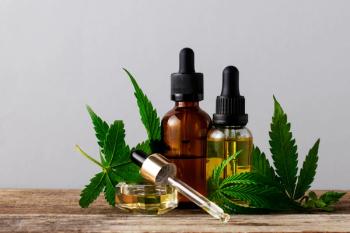
LCGC Europe eNews
- LCGC Europe eNews-04-29-2013
- Volume 0
- Issue 0
Environmental Biodegradation of Ionic Liquds
Researchers from Queen?s University of Belfast (Belfast, Northern Ireland, UK) have shown that marine bacteria are able to efficiently biodegrade ionic liquids (ILs).
Researchers from Queen’s University of Belfast (Belfast, Northern Ireland, UK) have shown that marine bacteria are able to efficiently biodegrade ionic liquids (ILs). The biodegradation of 1-ethyl- and 1-butyl-3-methylimidazolium ILs by three strains — B. snaguinis, R. erythropolis and K. palustris — was demonstrated by using high performance liquid chromatography (HPLC).
Corresponding author of the study Brendan Gilmore told LCGC that research into ILs has attracted attention in recent years, specifically because of their applications in “green chemistry”. ILs are found in lots of different applications as replacements for volatile organic compounds (VOCs) because of their “green solvent” credentials – non-flammability, thermostability and recyclability.
The research group has been studying the biological activity of ILs since 2009. Gilmore added that the research group was first interested by the ability of ILs to interfere with the formation of biofilms, showing their potential use as antimicrobial biocides. However, this led them to consider the effects of environmental exposure and how this would be dealt with.
The group collected seawater, rockpool water and sand from a site in Northern Ireland close to a busy harbour. The theory was that the location would provide selective pressure, increasing the number of microorganism species with the ability to biodegrade ILs. The samples were incubated with IL as the only carbon source in the medium. Therefore, the strains that survived would have to possess the ability to breakdown IL to use it as a source of carbon. The bacterial cultures were analysed by HPLC for up to 63 days.
Gilmore told The Column that it is important to understand the impact of IL environmental exposure. He commented: “The importance of the work is therefore in developing a contingency for accidental environmental exposure or designing processes for the ultimate biodegradation these compounds. Based on our findings, it ought to be reasonably straightforward to isolate bacteria from marine (or other environments), which can degrade these compounds efficiently.”
Gilmore also added that the remaining challenge was to identify the products of the IL break-down, but this was to be the subject of further study.
Reference
1. J. Megaw, A. Busetti and B.F. Gilmore, PLOS One, 8(4), e60806 (2013).
Articles in this issue
over 12 years ago
The Evolution of Size Exclusion Chromatographyover 12 years ago
Agilent Announces Establishment of Asia Glycomics Eduction CenterNewsletter
Join the global community of analytical scientists who trust LCGC for insights on the latest techniques, trends, and expert solutions in chromatography.




